We stopped at a bar before the second ferry to pick up some money at the ATM. There’s only one ATM on the island, and the other dancers said that it was often out of money, which indeed turned out to be the case.
“Y’all headed to Lasqueti?”, one of the bar patrons asked. An older man. Lass-keeti.
“Ya. Lasqueti is kind of far out, isn’t it? What kind of people move out there?”
“Draft dodgers”, he laughed. “Isn’t that right, Donna?” he asked, all of a sudden shy.
“Oh yes, folks went out during the war. Lots of draft dodgers,” said the woman behind the bar.
We’re headed to Lasqueti for a two-week contact improvisation dance workshop at Leviathan studio. Lasqueti is five hours from Vancouver and off the electricity grid. Draft dodgers who left before Vietnam and decided to stay after Jimmy Carter’s pardon, pot growers, artists, retirees, craftspeople and off-grid folk all live there. It is far enough from the rest of civilization that the government doesn’t bother with building inspection. If you have a truly out-there architectural vision, Lasqueti is the place to conceive it.
The ferry docks at town. Town is just a post office, cafe with wifi, a bar, hotel, school and an art gallery for an island of 600. There’s a communal sauna a little ways walk down the road. What else happens on Lasqueti? Some weekends there are picnics, or dance parties with local bands on the dock. On Saturdays there’s the market, where you can buy hand-carved knives, jewelry, food from vendors, and exchange gossip and local history. I’m drawn to the local history; I remind myself to keep an open mind. Many come live out here because they didn’t fit into regular society in some way or another, but there’s a lot to learn from even the conspiracy theorists if you can figure out how to start making small talk. Rule #1: Don’t ask for photos.

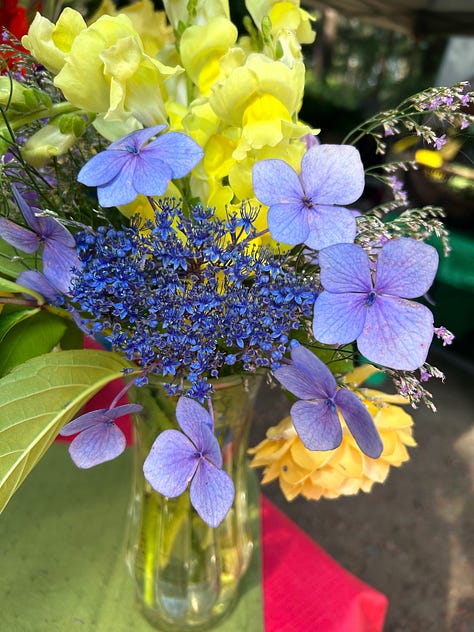
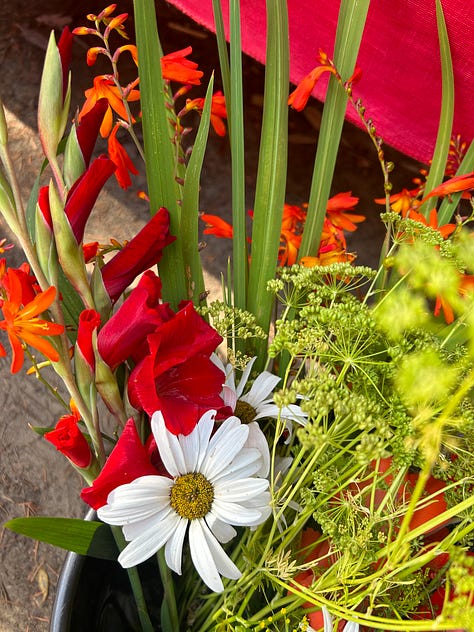
Contact improvisation was first developed by Steve Paxton and Nancy Stark Smith in the 1970s. Paxton, a 30-year old professional dancer, put together an experimental performance called “Magnesium” at Oberlin college in Boston. Nancy Stark Smith (19) was watching, and the combined playfulness-energy-formlessness took her breath away. Nancy brought her gymnastics training, while Paxton took inspiration from the traditional Japanese martial art Aikido. Ai-ki-do, literally “the way of harmonizing the ki (energy)”. Since then many others have contributed to the style.
Contact looks a little bit like sleep-walking: the dancer is on the floor, her muscles are soft, her spine is supple, her head is often lolling over onto the partner. It can be a partner dance, group dance, or solo dance. In the final case, people often say that they are partnering with the floor. The floor has a symbolic quality, as a resting place, and a support against the force of gravity. In Paxton’s book, Gravity (2018), he states “Birth is not so much a beginning as it is an abrupt change in which suddenly there are different factors than those in the womb, and there is gravity. With gravity, a new negotiation begins, and these terms condition us for the rest of our lives.” It can be mysterious if you come at it from a technical perspective, but if you keep an open mind, the abstract conceptualizing can offer interesting material to influence your dancing. “The Earth is bigger than you. You might as well accept it,” Nancy Stark Smith would say, while instructing dancers on how to fall onto the ground with grace.
There’s a weekly contact improv jam in Cambridge, with close to 30 attendees — this is a lot, for Cambridge’s size and the relatively small niche of contact dance — but there aren’t any regular classes. That’s one reason to be out here. The other attendees at the workshop are Vancouverites and assorted travelers from Singapore and the UK. The teacher is dance-artiste Benno Voorham, a Dutch choreographer with decades of experience. We’re learning rolling (“spiraling”) on the floor, body awareness, and capturing and redirecting the momentum of a partner. Benno also teaches movement improvisation more broadly: the trick of breaking out of movement patterns. If someone comes up to you, and slumps onto your shoulder, do you slump down to match them? Do you pull away so that they fall, or pull away slowly so that their weight moves with you? Turn around and roll off them? Improv teaches you to see more potential pathways in every interaction. Often workshop attendees come from theater, instead of dance. Actors train in dance for better body awareness, poise, and improved physical connection with others. Contact serves as a balance to ballet, which trains you to hold yourself upright.
Leviathan is owned and managed by a man named Mark Young. Contact has deep overlaps with the hippie-New Wave spirituality scene, but this place (unlike other similar movement retreat centers) is not a hippie commune. Mark was an aerospace machinist prior to the car crash that changed his life and led him to find mind and body rehabilitation in contact improv. He came out of the car crash with a skull fracture, a compromised left leg and balance disabilities. Depressed and in rehab, he started to attend contact improvisation jams in his local Toronto just to try something different and fun. After a few weeks of contact his recovery accelerated, stunning his team of 40+ doctors and therapists. He kept training in the style, met with Steve Paxton at an Oregon dance festival, and after a few years of dancing decided to build a studio dedicated to the form. He ended up on Lasqueti because the design was unusual, and there’s no building inspector here.
Mark is low key and low budget. He has no airs whatsoever, a fact that is at once disarming, endearing, and exasperating. He’s one of the regular teachers at his studio, but only since 2015, whereas the studio has been operational since 2008. Two Broadway dancers who came through for another teacher’s workshop told him he should teach, and before that, he didn’t suppose he was good enough. Baryshnikov’s daughter Shura has been here, brought by some of the Broadway dancers that she was friends with. Dance aristocracy, who treaded (one imagines) very gracefully. Before the pandemic, most attendees were coming from Asia and Europe. They’d come straight here from Vancouver airport and go back the same way. Only for Leviathan.
I’m here to dance, and also because I’m interested in the fringe space that this dance center has created. Fringe spaces harbor fringe ideas, and novel fringe ideas have been getting harder and harder to come by. Beyond the continuous (lifelong!) novelty-scouting, I just love the architecture, the way that it looks like the inside of a whale, the way that the roof undulates and tapers near the door, the symmetry of the structural elements balancing the asymmetry of the nonstructural elements, even the impracticalities (it lets birds in) are charming, at least for two weeks as a non-owner non-maintainer. You are what you eat, you speak what you hear, you draw what you’ve seen, and what you see and hear — that’s what your space structures for you. So I’m here.
Mark designed the space himself and built the main part of the structure over 11 months. The pine logs were cut from the ravine at the bottom of the hill, and three teenagers were hired to bring logs up the hill to the milling machine on weekends.
As Mark describes:
“I was a machinist before, and building this was a lot easier. There have been carpenters and engineers who came through here previous years and checked the math, and they all say it should hold. I haven’t found any other building like it. The Romans must have put together something similar as temporary structures for housing soldiers. They were masters at building with arches, but their wooden buildings obviously haven’t survived.”
There are many arts retreat centers, but this one is also someone's home. Mark is always present, attending the workshops and cooking the meals (He doesn't trust anyone else with a wood stove, he says). Mark knows everything about the place, from the gardening to the manure composting. His presence holds the space together between workshops, just as Benno holds space during the class.
Life on Lasqueti
I didn’t know this before I got here, but Lasqueti is something of a fallen marijuana empire. For a long time it used to be the major industry on the island. People grew their pot in the woods to keep it out of sight of annual government helicopter raids. A heli would zoom around the island for two, three days before buzzing off to one of the other islands. The island was once home to so many lucrative marijuana farms that you couldn’t find a sixteen year old who’d accept less than 25 CAD/hour for day labor. Once the Canadian government legalized marijuana in 2018, the industry on the island imploded. Pot used to be 5000$/pound and now it's $600. Plus it takes two weeks of work to harvest ten pounds of pot, and you have to pay people for the harvest. Big Weed won.
You have to wonder where all the money went, because everyone here just drives pickup trucks and wears homemade-looking clothes. They’re not dumb…
One afternoon me and another dancer went over to visit the wood carver, who we met at the market. He lives in this tower-house that he and his friends designed and built together. The interior is full of personalized details: glass mosaic tiles in the kitchen, staircase railings made out of twisty arbutus limbs, a kiln that doubles as a house heater. We ended up whittling chopstick-hairpins out of aromatic hunks of maple wood with him, his apprentice, and two other visitors.
I love the personalization. The houses and public spaces that we inhabit are usually built from someone else’s somewhat standardized aesthetic sense. When a house is constructed for a specific person, you get to see a little bit of how their mind works, an externalization of their internal world, very different from yours, a new and intriguing palette. People say that a house has character, or personality, because the house itself is expressing, regurgitating some of the human flavor that went into its design, and we can feel that when we stand in the kitchen.
When I came back and mentioned the visit to Mark, he said “They built that tower for an ocean view. The trees overtook it ten years ago.” Tough.
Some downsides to the alternative lifestyle: functioning civil governance is easy to take for granted until it’s gone. A few years ago there was a stalker on the island who made rounds of women’s bedrooms in the night. They’d wake up to see him watching them. It took much longer than it should have to figure out that he was a widespread phenomenon (30+ women!), and then to decide what to do with him (Police came to the island and took him away), without an elected general government for the island.
More gender-neutrally, maintaining an off-grid property is big work. Power mainly comes from solar panels and runs low on stretches of cloudy days. The climate on the island is relatively gentle, but not abundant. There is little soil on the hill to grow crops, and every year the rains wash more of it down into the ocean. There's a chicken coop on the property, less for the eggs and meat, and more for the nutrient-rich chicken guano that feeds a self-sustaining population of kale. Mark hunts feral sheep (left behind by earlier settlers) for meat, and buys salmon for the table from indigenous fishermen.
Yet it's a romantic island. The aurora borealis made an appearance the first week we were here, the glow could be seen from the north shore. Bioluminescent dinoplankton came in on the tide for a few nights in the second week. We went out and swam with them. The plankton blooms appear during nutrient upswells from the lower ocean, and form into skeins which float on the surface of the water. Shaking the skeins creates scattering droplets of light. The plankton emit light to scare away predators, by drawing the attention of even bigger predators.
At the cafe people talk about how the tide pools used to be packed full of sea-stars, instead of the handful that you get now as you walk down the boat dock. I asked around at the market to find the novelist who I had heard lives here. Someone told me that he got Parkinsons and had to move off the island, and died.
Sometimes I get the sense that I'm chasing the magic, and I'm a little late. The heyday here must have been pre-pandemic with the 40-person non-hierarchical artist collectives, or with the entrance of Shura Baryshnikov. Does the attendance of Broadway dancers and scions of the great legitimize a place? It does, and it doesn’t. It’s easier to allow prestige to transfer prestige, uneasy and also very easy. It’s harder to justify value from scratch. I found myself more excited to be there knowing that Broadway dancers had found it before me. A stamp of approval, to be passed onwards. It’s so silly, it’s all made up. It’s effective anyways.
“A place like this could pull in 250k a year on Airbnb,” Mark shrugged. But he runs it at cost.
What is the value of running a completely unique and nonprofit dance center? It takes independence. It’s an imaginative leap. What do you get in return? You are the proof of concept. One doesn’t strictly need architects and developers. One can build the arts space one wants, as an individual without any major funds or arts-world pedigree, and people will come.
It’s not complete, but it is for sale. 9000 sq ft studio including a 2000 sq ft dance floor on 20 acres for the paltry sum of 1.6M CAD. What’s happening to Mark? He wants to build a smaller studio on Lasqueti which is easier to winterize.



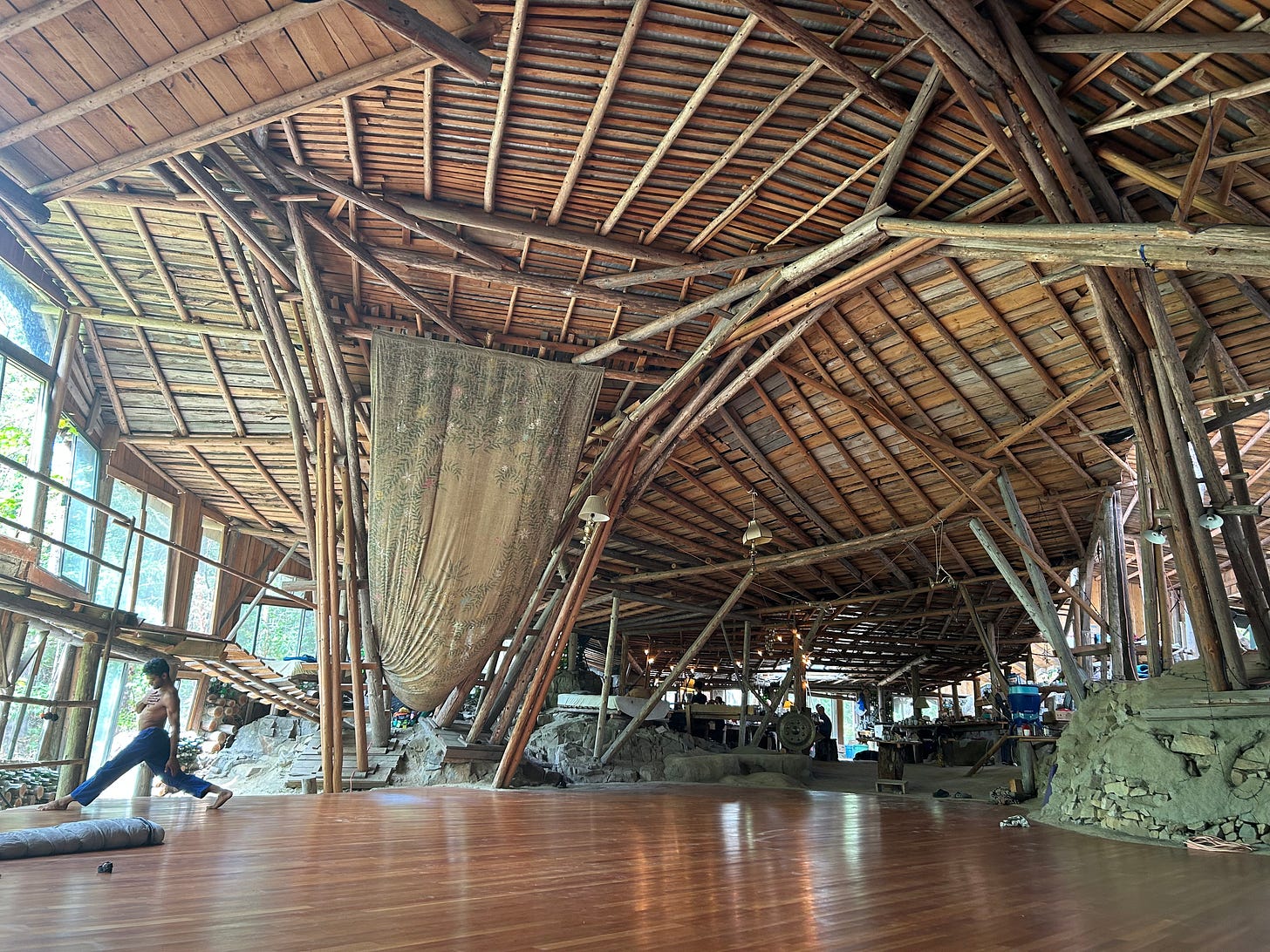
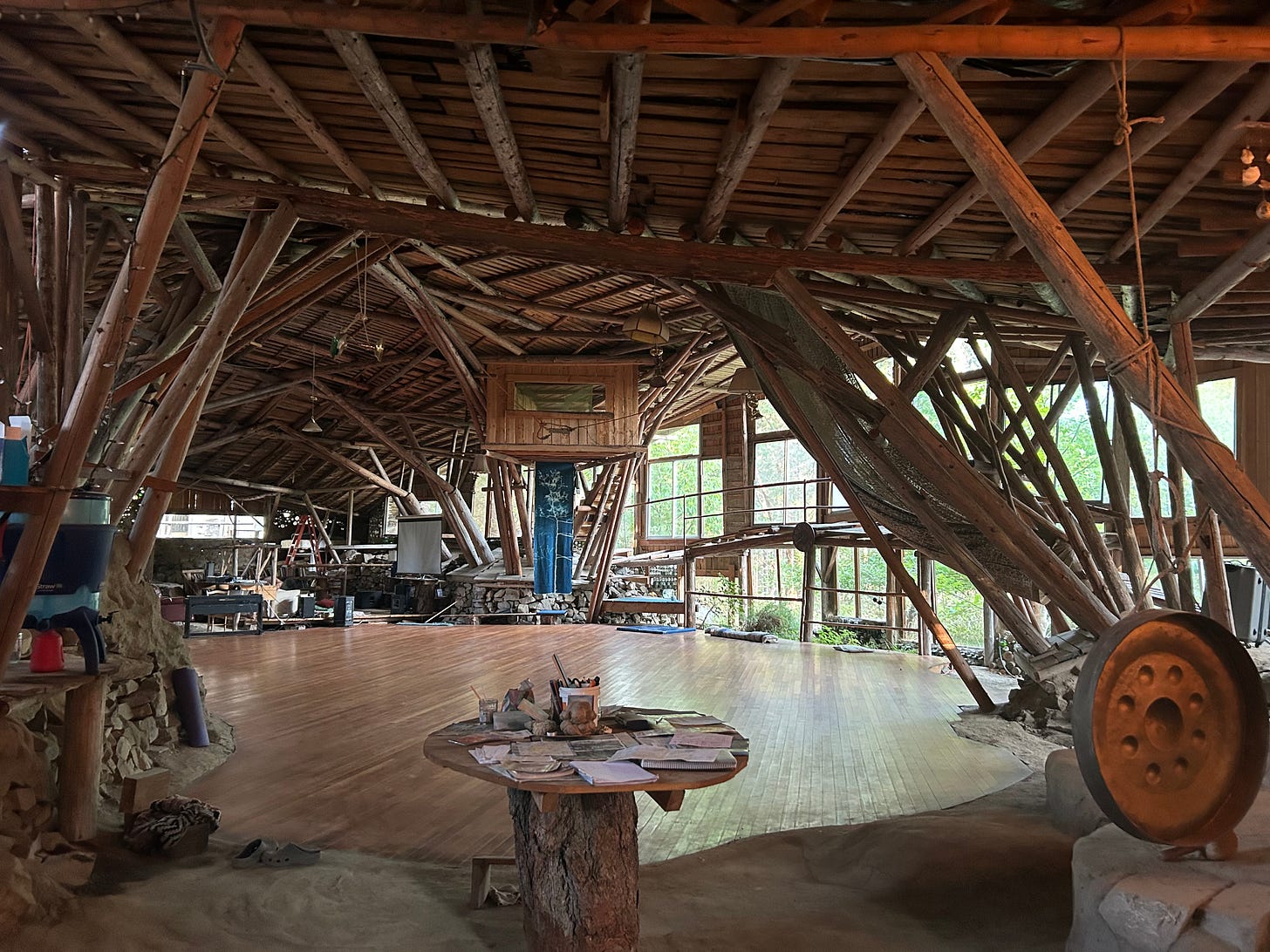
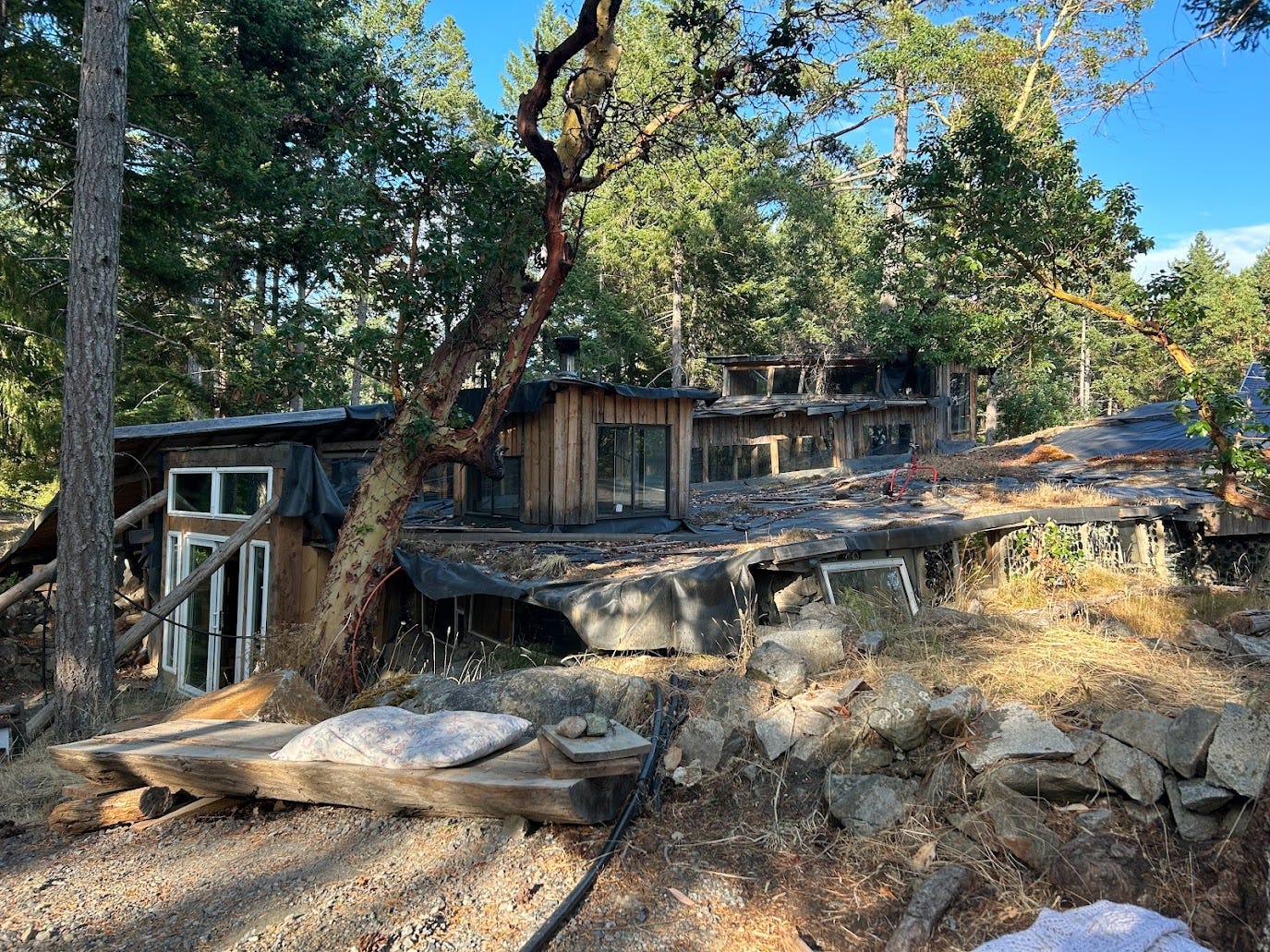
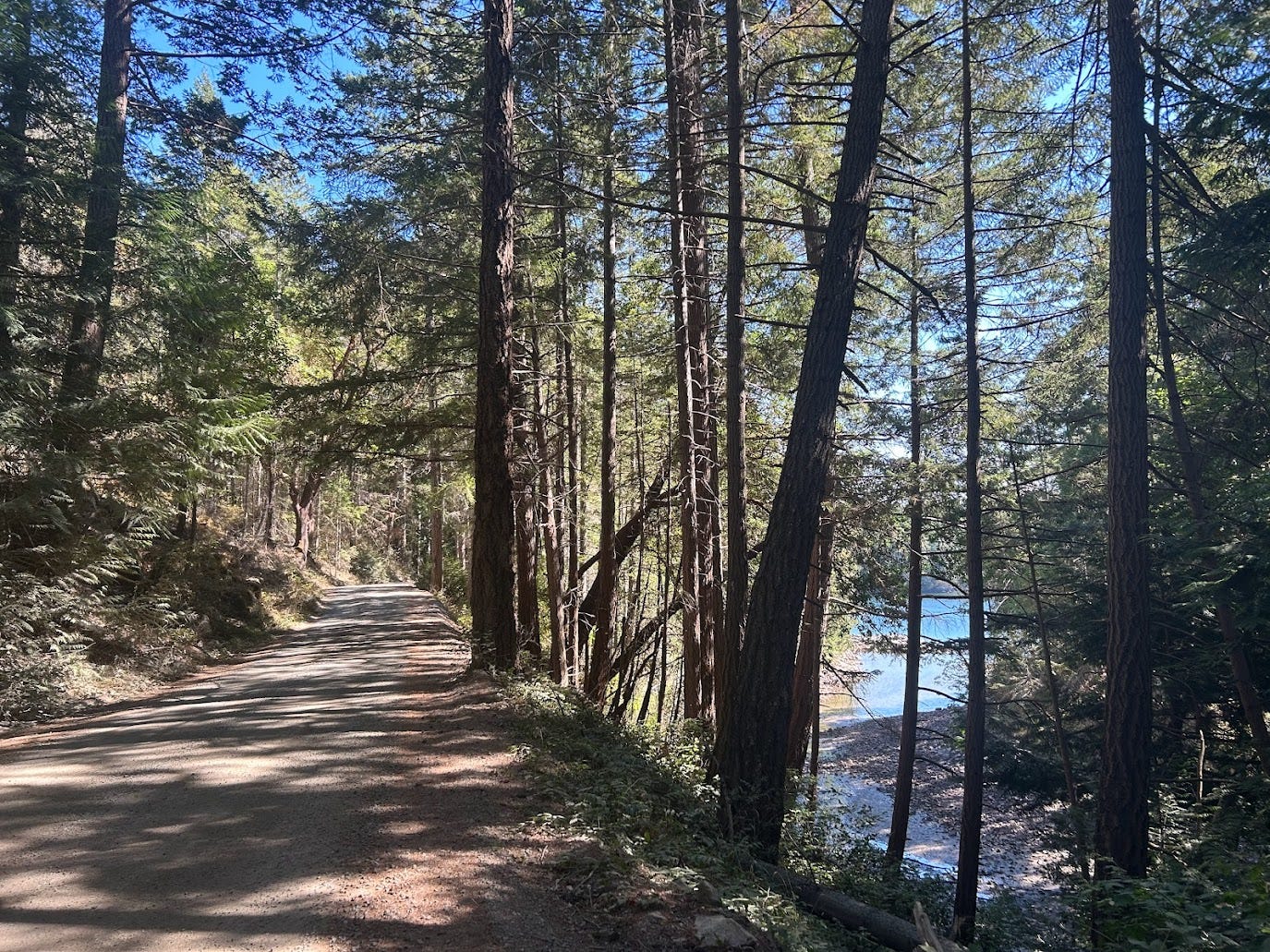
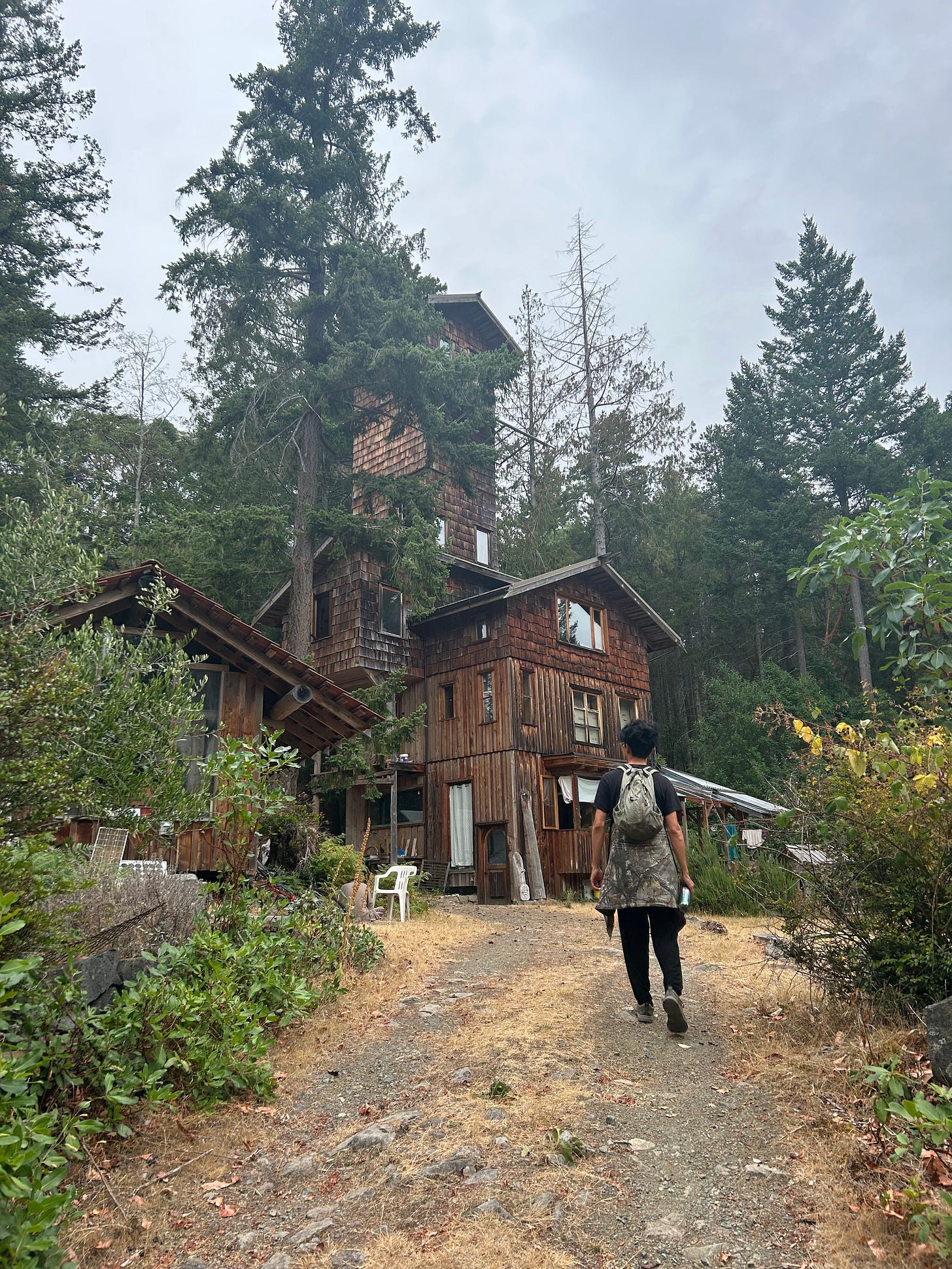
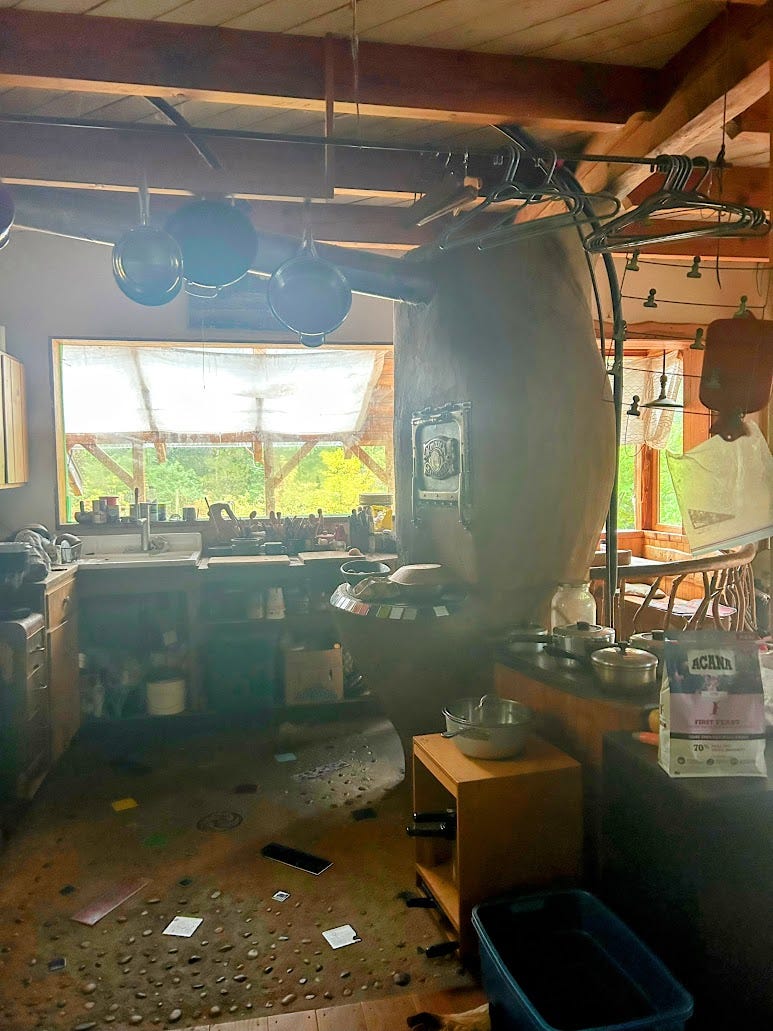
Beautiful piece Anvita! It was a joy to be there with you and all the great dancers!